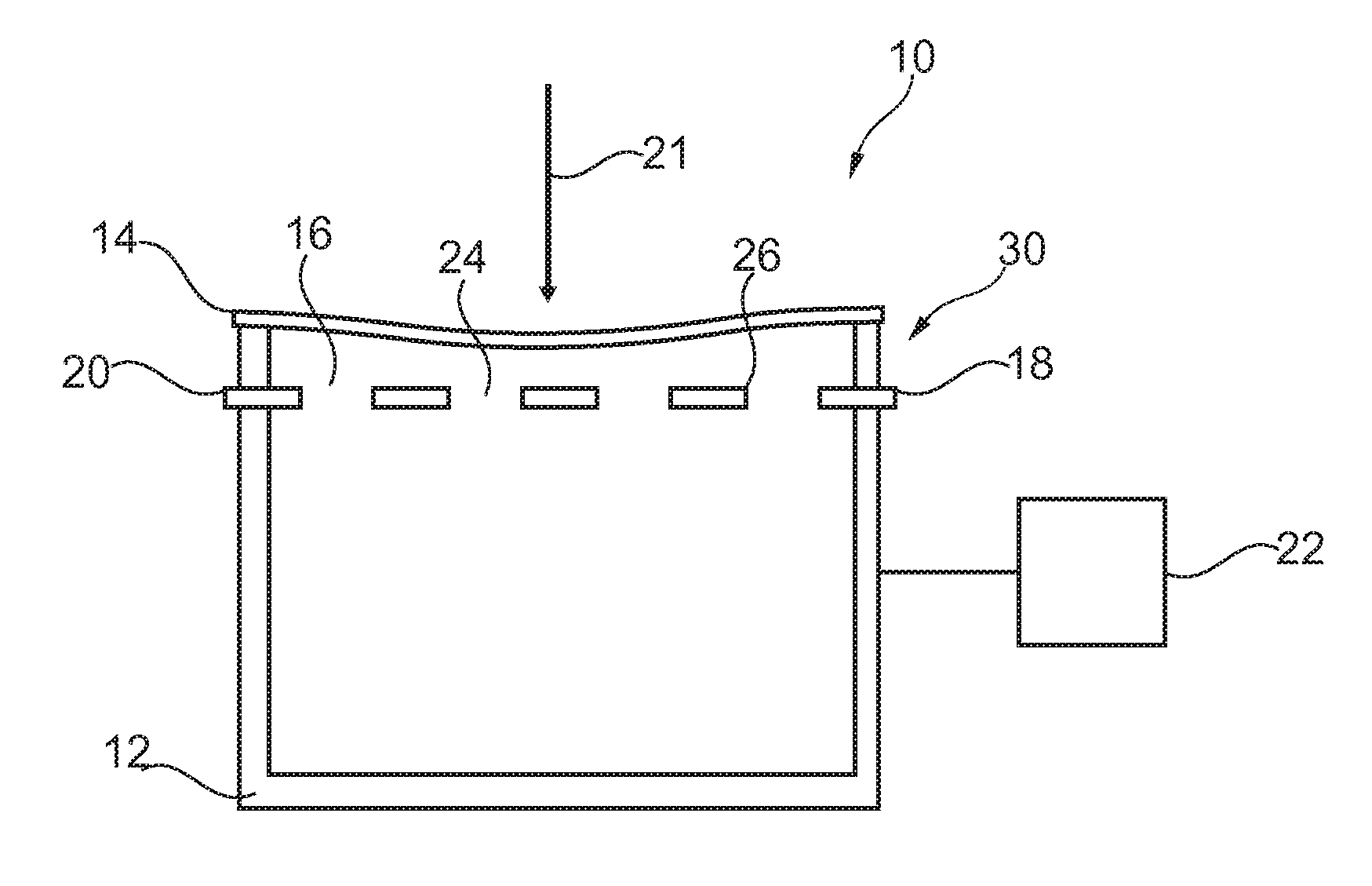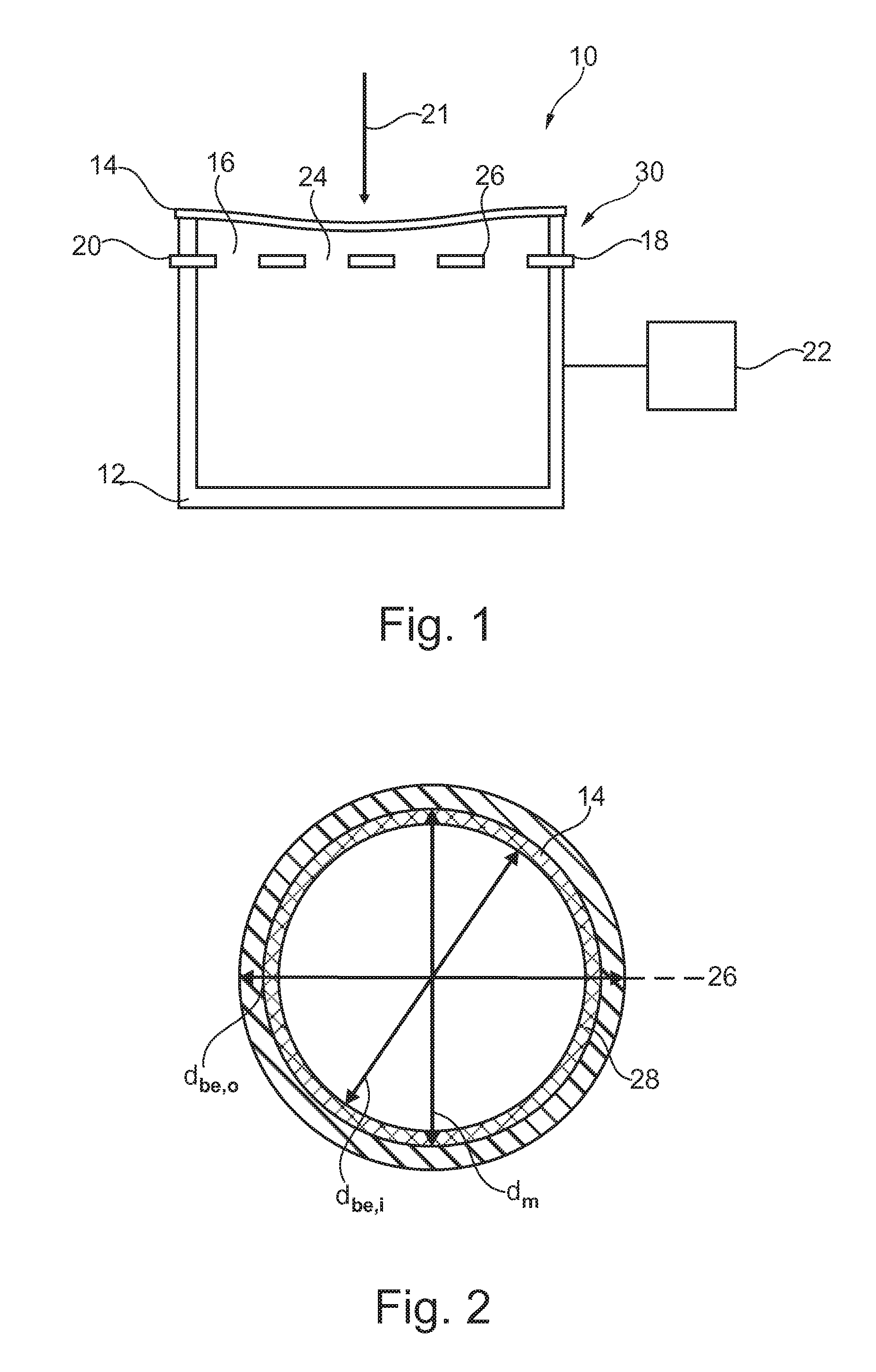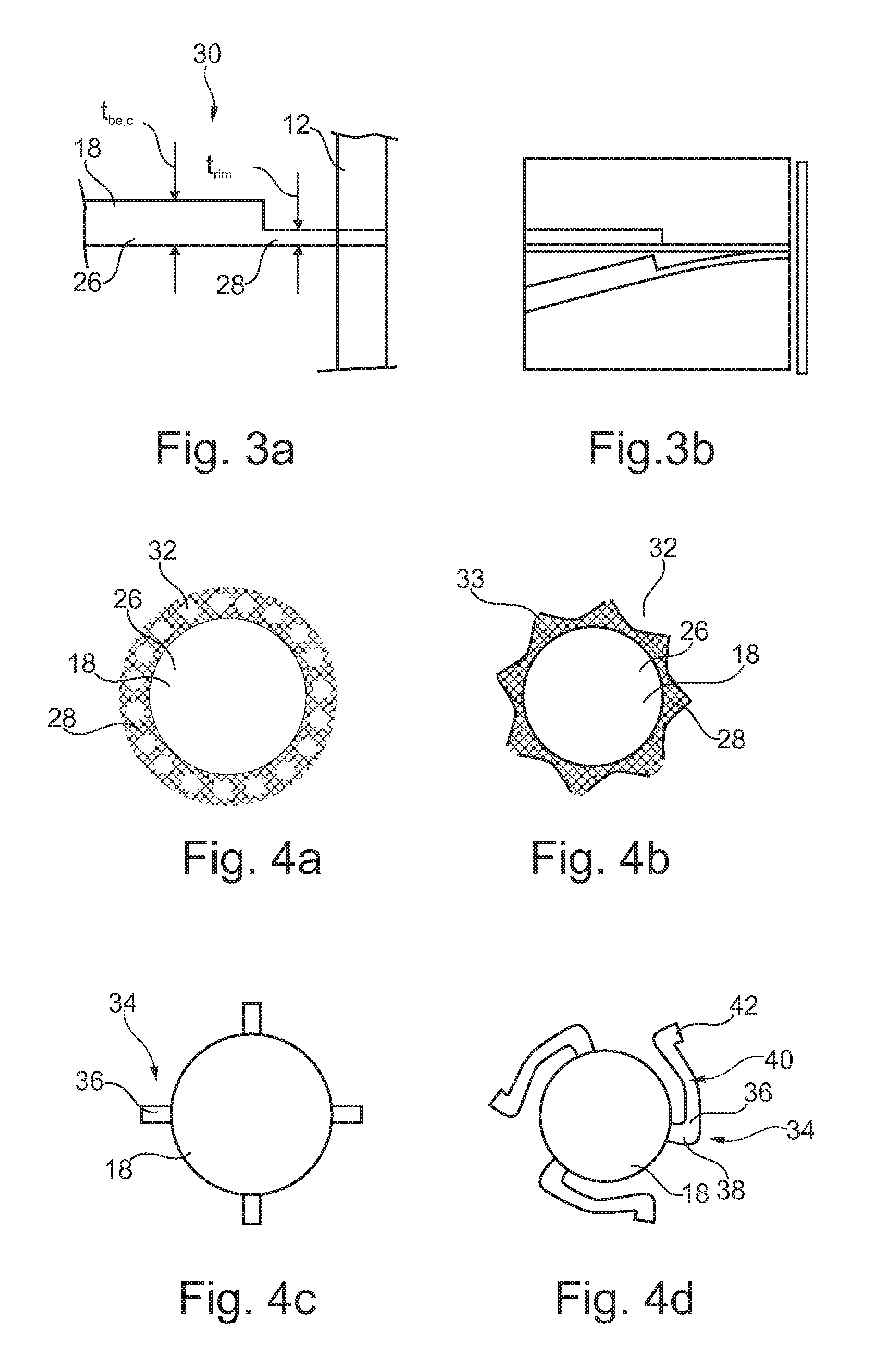MEMS Transducer for an Audio Device
a technology of microelectromechanical system and audio device, which is applied in the direction of electrical transducers, mics, electrical equipment, etc., can solve the problems of unfavorable electrical output signal noise, unfavorable sound quality, and unfavorable sound quality, and achieve the effect of facilitating the manufacturing process and easy manufacturing process of the mems transducer
- Summary
- Abstract
- Description
- Claims
- Application Information
AI Technical Summary
Benefits of technology
Problems solved by technology
Method used
Image
Examples
Embodiment Construction
[0046]The illustration in the drawing is schematically. In different drawings, similar or identical elements are provided with similar or identical reference signs.
[0047]FIG. 1 schematically shows a cross-sectional side view of a MEMS microphone 10 according to the invention. The MEMS microphone 10 is of capacitor type and may be part of a mobile phone. The MEMS microphone 10 has low body noise due to mechanical vibrations of its elements, in particular its membrane and its back-electrode, since the back-electrode is designed to have a synchronous mechanical response on mechanical vibration of the whole microphone 10.
[0048]The MEMS microphone 10 comprises a cylindrical back-chamber 12 which serves as a resonator of the MEMS microphone 10. Further, a membrane 14 or diaphragm covers an opening 16 of the back-chamber 12. The membrane 14 is fixed to a circumference of the back-chamber 16. A back-electrode 18 is arranged within the back-chamber 12 next to the membrane 14 in such a way th...
PUM
| Property | Measurement | Unit |
|---|---|---|
| Fraction | aaaaa | aaaaa |
| Fraction | aaaaa | aaaaa |
| Fraction | aaaaa | aaaaa |
Abstract
Description
Claims
Application Information
 Login to View More
Login to View More - R&D
- Intellectual Property
- Life Sciences
- Materials
- Tech Scout
- Unparalleled Data Quality
- Higher Quality Content
- 60% Fewer Hallucinations
Browse by: Latest US Patents, China's latest patents, Technical Efficacy Thesaurus, Application Domain, Technology Topic, Popular Technical Reports.
© 2025 PatSnap. All rights reserved.Legal|Privacy policy|Modern Slavery Act Transparency Statement|Sitemap|About US| Contact US: help@patsnap.com



